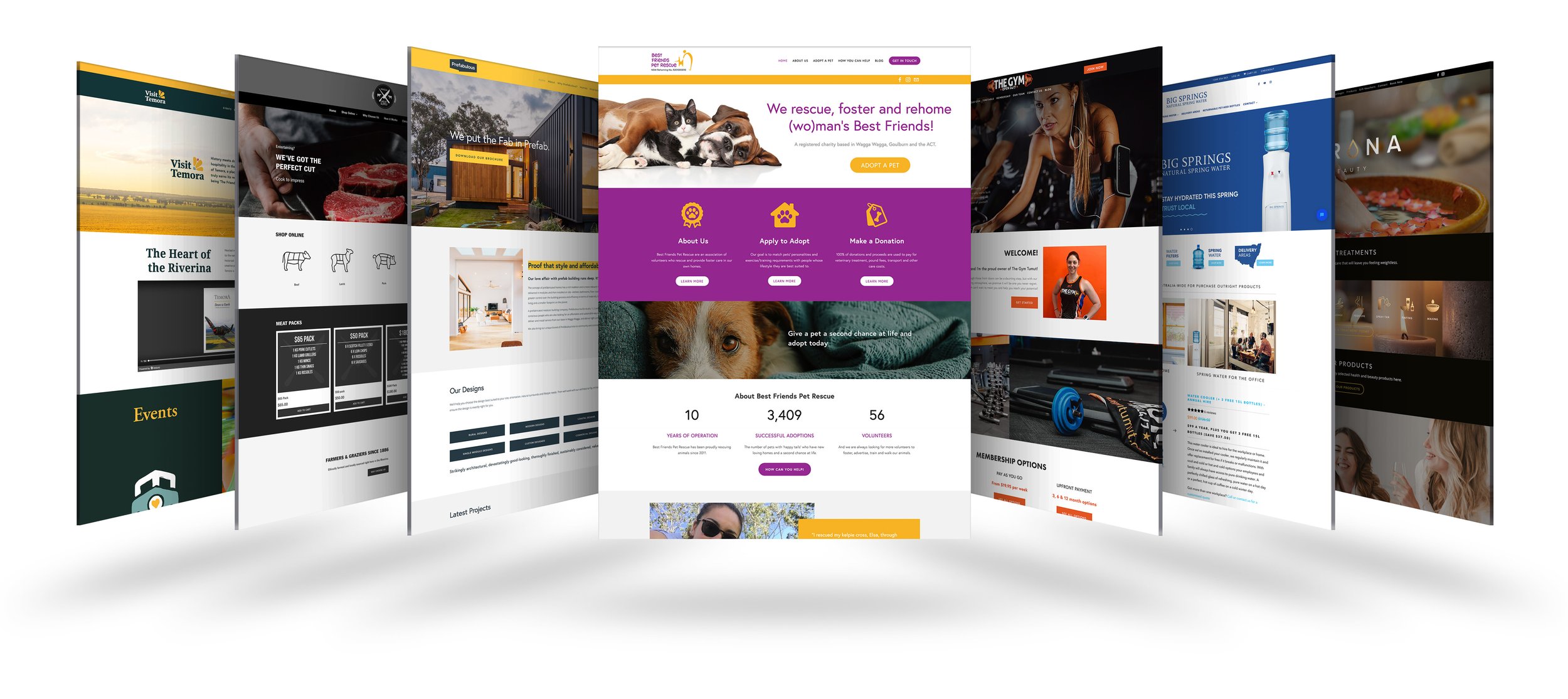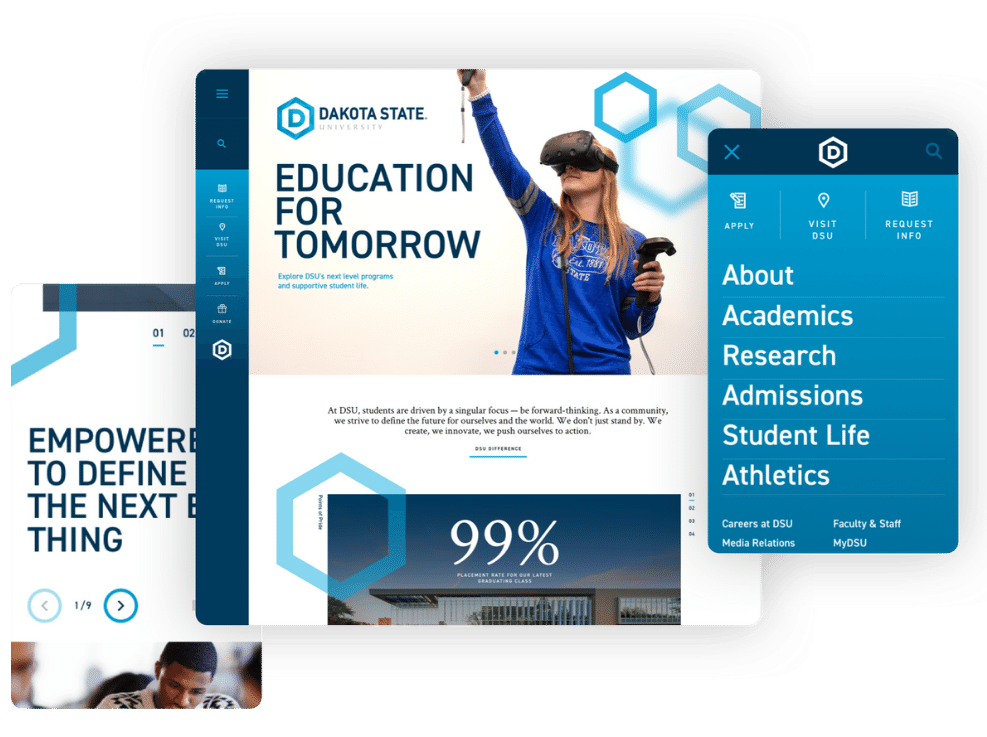Key Principles of Effective Ecommerce Website Design
Key Principles of Effective Ecommerce Website Design
Blog Article
The Power of User-Centered Site Layout in Expanding Your Online Target Market
In a significantly affordable electronic landscape, the relevance of user-centered web site design can not be overstated. By focusing on the demands and actions of users, services can create websites that not only draw in but likewise engage a varied target market. Reliable style principles-- such as intuitive navigation and access-- are crucial in promoting user fulfillment and loyalty. Nevertheless, comprehending exactly how to leverage these principles effectively raises critical questions concerning implementation and effect. What techniques can companies take on to guarantee their designs reverberate with customers and ultimately drive growth?

Comprehending User-Centered Design
User-Centered Layout (UCD) is a fundamental strategy to website development that focuses on the needs, choices, and behaviors of end customers throughout the layout process. This method stresses understanding users deeply-- via research study methods such as interviews, surveys, and usability testing-- to develop a web site that resonates with them. By integrating customer feedback at every phase, designers can ensure that the end product lines up very closely with customer assumptions.
UCD advertises repetitive layout, where models are examined and refined based on user interactions and experiences. This cycle not just enhances use yet likewise fosters a sense of ownership amongst customers, as they feel their input is valued and impactful. Furthermore, UCD aids determine prospective obstacles and pain factors in the customer journey, allowing developers to resolve these challenges proactively.
Eventually, embracing UCD brings about websites that are extra intuitive, engaging, and effective. By positioning customers at the facility of the layout process, organizations can develop electronic experiences that not just bring in but also maintain their target audience, driving higher complete satisfaction and commitment. In a competitive on the internet landscape, this strategy is essential for attaining continual success.
Key Concepts of Customer Experience
An effective individual experience (UX) hinges on a number of crucial principles that assist the design process and boost communication between customers and the site. Most importantly, usability is critical; the internet site needs to be user-friendly, enabling customers to navigate quickly and find info swiftly. This includes clear labeling and a logical framework that minimizes cognitive tons.
Secondly, access plays a critical role in making certain that all users, despite their impairments or abilities, can successfully engage with the website. Including alt text for photos, key-board navigating, and display visitor compatibility cultivates inclusivity.
Uniformity is another necessary principle. A cohesive style language, from color design to typography, helps customers construct familiarity and trust with the web site (Website Design). It also reinforces brand name identification
Additionally, feedback systems are important. Individuals should get instant and clear responses to their actions, whether via visual cues or confirmation messages, which improves their confidence in navigating the website.
Finally, mobile responsiveness can not be overlooked. With a boosting number of users accessing sites via mobile phones, a design that adapts perfectly to various screen sizes is critical for preserving a positive user experience.

Benefits for Online Involvement
Reliable online interaction uses numerous benefits that can significantly enhance a website's overall performance - Website Design. By cultivating meaningful interactions in between users and the internet site, companies can grow a loyal target market that returns with regularity. Engaged customers are more probable to share web content, therefore boosting natural reach and attracting brand-new visitors with word-of-mouth promotion
Boosted online involvement also results in improved individual contentment. When users locate a site that reverberates with their requirements, they are extra inclined to explore its offerings completely, which can bring about greater conversion prices. Additionally, engaging content urges customers to spend more time on the site, decreasing bounce rates and positively affecting search engine ranking algorithms.
Additionally, reliable involvement offers indispensable insights into user preferences and actions (Website Design). By assessing customer communications, companies can tailor their content and layout methods to fulfill the advancing assumptions of their target market. This adaptive approach not just boosts involvement however likewise strengthens the brand name's track record as user-centric and responsive
Ultimately, prioritizing on-line interaction with user-centered style creates a successful environment where both the company and the target market benefit, bring about continual development and success in the digital landscape.

Methods for Efficient Style
To make the most of the benefits of online engagement, using particular strategies in website design have a peek at this website is paramount. Intuitive navigating is crucial; users must quickly find information without confusion. A well-structured food selection, clear labels, and see post a rational pecking order boost the user experience and decrease bounce rates.
2nd, receptive style is crucial in today's multi-device environment. Ensuring that an internet site adapts perfectly to different display sizes promotes access, thus suiting a more comprehensive audience. This versatility not only improves customer contentment yet also favorably affects online search engine rankings.
Third, using visual power structure overviews individuals' focus to crucial aspects, such as phone call to action (CTAs) Using contrasting colors, varying font sizes, and calculated spacing can properly route users toward desired actions, helping with greater communication.
Additionally, executing consistent branding across all pages builds trust fund and acknowledgment. A natural color scheme, imagery, and typography enhance brand name identity and create an expert appearance.
Finally, maximizing loading speeds is important. Users are much less most likely to involve with a slow-loading website, making efficiency optimization an important facet of effective design. By incorporating these techniques, site makers can enhance individual experience and ultimately grow their on the internet target market.
Real-World Success Stories
Success stories in user-centered site layout illustrate the tangible advantages of prioritizing user experience. One notable instance is the redesign of the web site for the not-for-profit company, Charity: Water. By incorporating individual responses, the company structured navigating and highlighted storytelling via impactful visuals. As a result, they experienced a 250% increase in on-line donations, showing just how an intuitive design can drive individual involvement and assistance.
Another compelling instance is that of Airbnb, which utilized user-centered layout principles to enhance their booking process. By streamlining the user helpful site journey and integrating tailored referrals, they considerably minimized site desertion rates. This emphasis on customer experience contributed to an earnings development of over 70% in a single year, underscoring the connection in between properly designed user interfaces and financial success.
Furthermore, the e-commerce titan, ASOS, carried out customer testing to improve their mobile app. By dealing with customer pain factors, they accomplished a remarkable 30% rise in mobile sales. These examples highlight that purchasing user-centered layout not just enhances individual contentment but also drives concrete organization results, reinforcing the crucial role of customer experience in accomplishing online growth.
Conclusion
By prioritizing customer requirements and preferences, businesses can produce accessible and instinctive digital experiences that promote commitment and drive conversions. The integration of customer comments throughout the design process not just lowers bounce rates but additionally urges expedition.
User-Centered Style (UCD) is an essential strategy to internet site growth that focuses on the needs, preferences, and behaviors of end users throughout the layout procedure. By including customer comments at every phase, developers can guarantee that the last item straightens closely with individual assumptions.
An effective individual experience (UX) pivots on a number of crucial principles that lead the design procedure and improve communication in between individuals and the site.Success tales in user-centered site layout show the substantial advantages of prioritizing individual experience. These examples highlight that spending in user-centered layout not just boosts user complete satisfaction yet additionally drives substantial service results, strengthening the vital duty of customer experience in attaining on-line growth.
Report this page